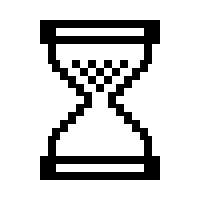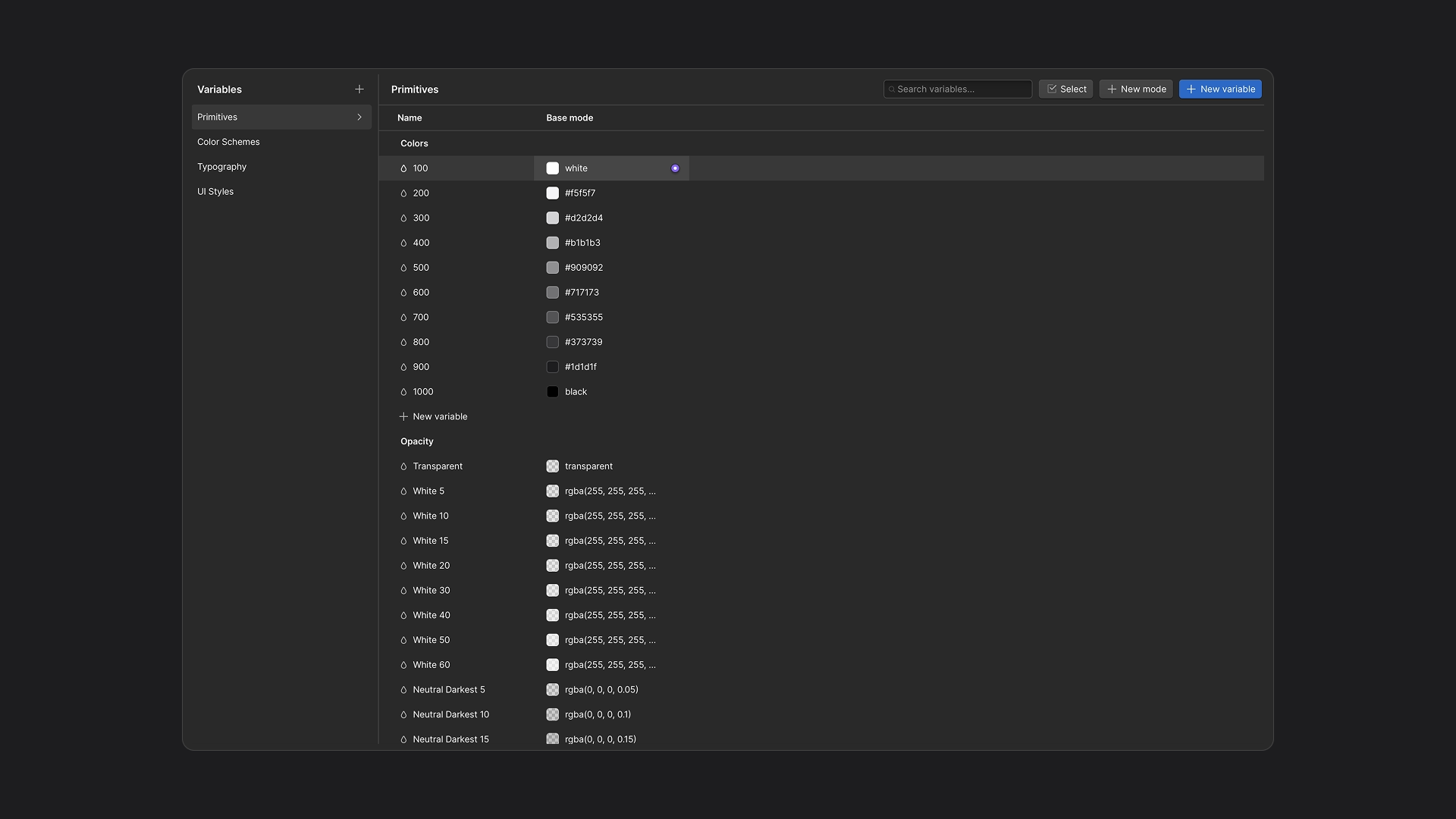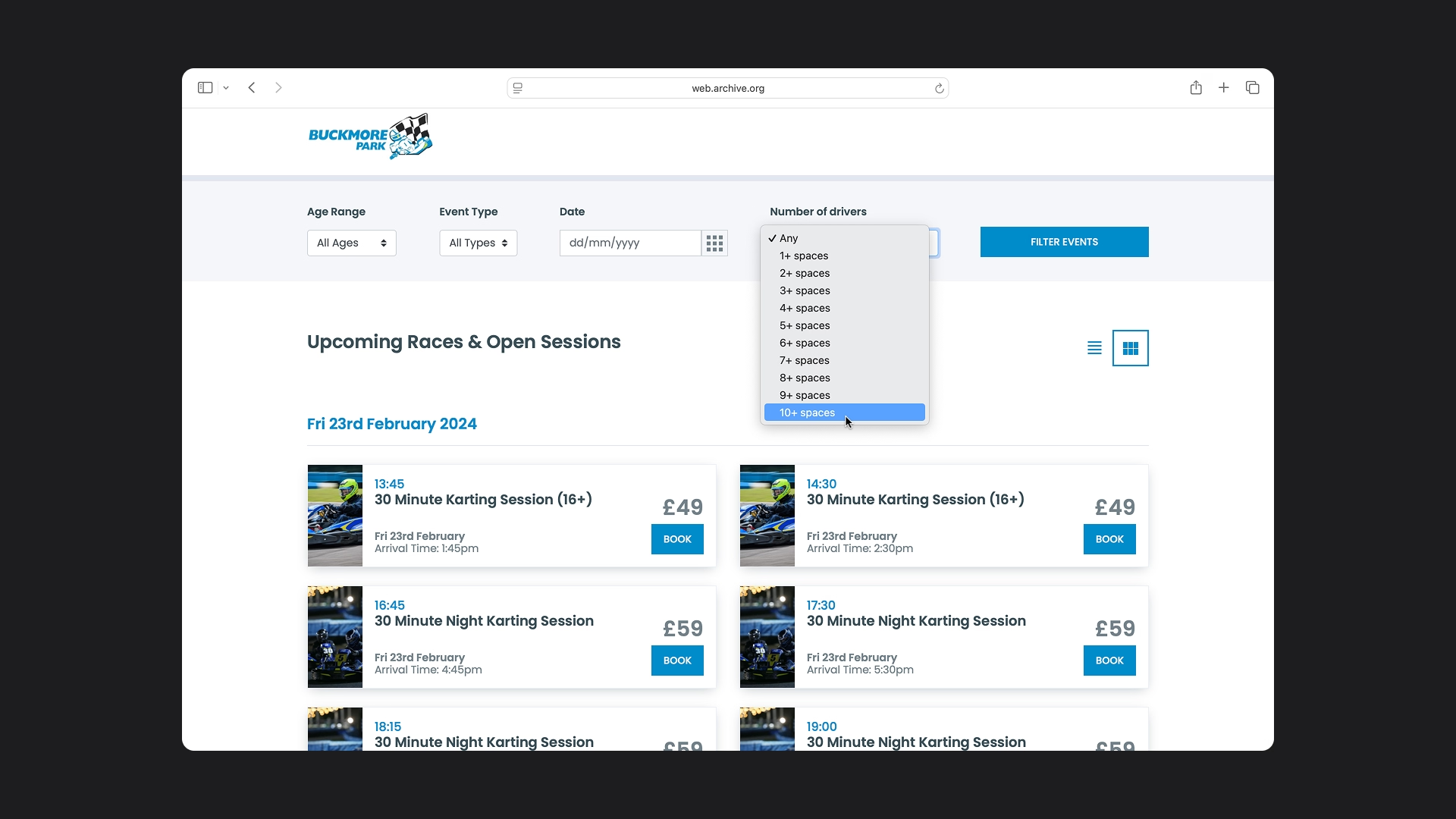Overview
Buckmore is where Formula 1 champions such as Lewis Hamilton and Jensen Button got their start in racing. I worked with the directors, management and cross-functional teams to efficiently convert its new attention into revenue.

We use cookies

Overview
Buckmore is where Formula 1 champions such as Lewis Hamilton and Jensen Button got their start in racing. I worked with the directors, management and cross-functional teams to efficiently convert its new attention into revenue.
Role
Principal Product Designer
Team
Directors
Product
Circuit Management
Technical Staff
Marketing

Millions of people have their eyes on Buckmore Park.
Every year, the circuit gets a flood of impressions from large content creators like TheBurntChip, Sidemen and ChrisMD.
But turning that attention into revenue was difficult.
Their digital product—its primary vehicle for converting that attention—wasn't optimised for conversions or growth.
The motorsport industry had experienced a boom, fuelled by Netflix documentaries like "Drive to Survive" and Formula 1's rise in online popularity.
The market was seeing 15% YoY growth. With karting circuits uniquely positioned as a way to get involved.
By transforming the digital product, we could capitalising on the industry's upward trend. Positioning Buckmore as the definitive entry point for aspiring racers.
Measurements for success:

I combined statistical data with real-world user observation, to understand both the rational and emotional motivations that drive karting fans.
Seeing first-hand why people enjoyed motorsport provided me with valuable insights.
Racers at Buckmore Park have a profound respect for the circuit's history. This would be hard to grasp from conducting online research alone.
I researched competitors across three categories:
1. Market Research
To understand our target market, I analysed 3 months of user behaviour to identify key drop-off points in the product.
Many users had multiple session types before booking. Suggesting that users were being fatigued by decision paralysis.
2. Behavioural Interviews
I conducted on-site interviews at Buckmore Park, gathering feedback from 10+ participants.
Talking to the people who know the product the best—in their natural environment—was useful in getting a feel for challenge.
This wasn't just about improving a digital product. We were responsible for telling a 70+ year old story.

We created Ethan: a Gen Z racing enthusiast that loves karting in his spare time. He'd like to see where he could take his passion, and understand what a pathway to the big time looks like.
“How might we convert attention into meaningful growth and revenue, through our digital experience?”

Buckmore offered numerous different racing formats that varied in levels of skill.
This validated insights obtained from market research. Which suggested that users were bouncing because of decision paralysis.
I worked with the directors and management to establish an information architecture, based on user intent and current experience level.
By creating logical pathways for different customer types—adults, juniors, groups and corporate bookings—we dramatically reduced cognitive load and cleared the path to booking.
I. High-0ctane
Leverage the exciting, high-octane feel of motorsport, throughout the entire experience.
II. Clear Architecture
Design clear pathways for users at different ends of the spectrum (from casual to serious).
III. Conversion-Rate Optimisation (CRO)
Eliminate friction and optimise the product, using conversion-design principles.
During the design process, we explored building a racing-first experience focused on individual enthusiasts.
We chose a balanced solution that served both enthusiasts and corporate clients; corporate events represented a major share of circuit revenue.
Designing only for racing enthusiasts could have alienated corporate decision-makers.
I. Directors
To ensure design decisions were aligning with business goals, I liaised with the directors throughout the entire process.
We established regular check-ins with a clear focus on the circuit's history and future. Ensuring that the work would have a long and lasting impact.
II. Management
I worked closely with the management team to ensure our digital experience aligned with the brand, its story and its values.
By collaborating with management on content strategy, we created a seamless experience—from social media engagement through to booking completion.
III. Operations
Collaborating with operations ensured our digital experience aligned with what the circuit actually offered.
This meant getting to grips with the circuit's constraints and operational workflows, so that our digital product didn't create (a) unrealistic expectations and (b) operational problems.
I worked with stakeholders to establish clear success metrics. Ongoing discussions ensured a regular connection between the work being produced, and the short-term/long-term business impact.

I sketched user flows that integrated conversion design principles, from the ground up. Simplifying the path from first visit to booking.

I then built interactive prototypes and tested them with users. This allowed us to conduct A/B tests before moving into high-fidelity design.
We were able to assess what enhanced the user flow, in comparison to what hindered the user flow (in the existing product).
It was important to create an experience that not only looked good, but was genuinely useful.
This meant designing clear navigational paths that made it easy to go through user flows. The goal was to provide users with all the necessary pieces of information to make a purchasing decision.
The result were a series of user flows that guided users intuitively, from A (arrival) to B (booking).

Initial testing revealed that 80.1% of all traffic was coming from mobile devices; most users were arriving from social media.
It was important to create immediate access information—about experience levels and racing formats.
This meant designing a condensed set of FAQs, with a clear route to more extensive FAQs (if and when required).
Based on user feedback, I:

Component Library
I built a component library that enabled a consistent implementation of the new visual language, across all user devices.
Accessibility Standards
I met WCAG 2.1 AA standards using a tinting system, from 100 to 900. Which made the user experience accessible for everyone.
Responsive Design
I tailored the design to be mobile-first, while ensuring desktop experiences were robust. For particular use cases, like parents and company representatives doing more in-depth research, this was essential.

I. Unclear racing formats, and the experience required to take part in them.
I worked with the directors and management to redesign the circuit's information architecture. Creating clarity and confidence in first-time users.
II. A mobile-first user base that needs comprehensive information.
I designed a responsive experience that provided information contextually. Further information was made available via more extensive FAQs.
Established premium market positioning within UK karting industry. Conversion rate optimisation integrated throughout the entire product. Clear pathways for new karting enthusiasts.
New design system, enabling rapid feature development. Premium market positioning to supports new business strategies. Higher LTV for new, existing and future customers.
Historical Significance
Authentic storytelling significantly outperformed generic motorsport content. Users responded strongly to connections with Formula 1, content creators and associated names.
This accelerated user engagement when properly integrated - fundamentally improving the business' content strategy.
Confidence-Building
It wasn't clear in the beginning how much confidence a user needed before making a decision.
Despite karting having a low barrier to entry, users had many questions. This made vital for the digital product to answer those questions, prior to booking.
Simplified Architecture
Simplifying the information architecture increased both engagement and conversion rates.
Rather than overwhelming users with too many options upfront, this simplified approach built the user confidence.
Since working together, Buckmore has received the green light to develop "The Paddock".
This will be a new, 20,000 sq ft development that will expand its product offering, from karting experiences to a 120-seat restaurant, 18 motion simulators, conference room and terrace.
The Paddock will also be home to Buckmore's Driver Development Programme. Designed to help the next Formula 1 champion get their start.